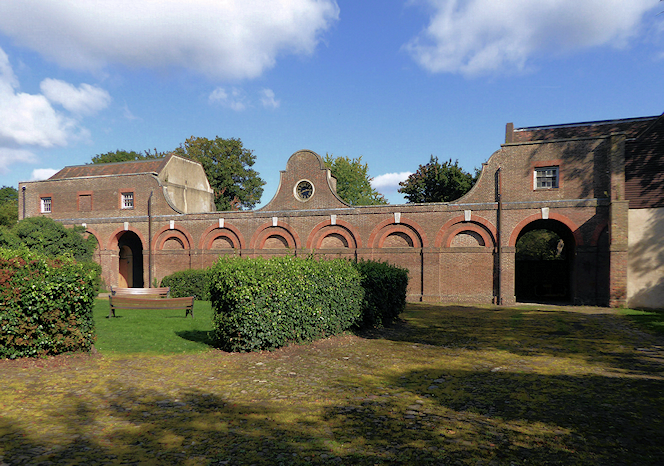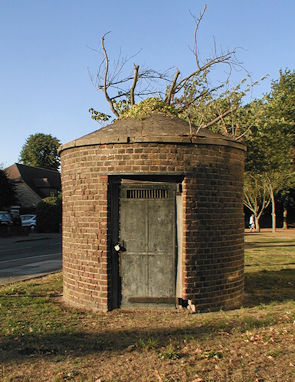Cranford
Cranford, Hounslow/Hillingdon
A Heathrow satellite community lying between Hounslow and Hayes

An early Saxon settlement on what became known as Hounslow Heath, the manor of Cranforde is mentioned in Domesday Book and was later described as the prettiest village in Middlesex. By 1274 there was a bridge carrying the Bath Road over the River Crane, but the village remained a quiet backwater until the early 20th century – even showing a slight decline in the late 19th century as the railway took away coaching traffic.
Cranford Park, once the grounds of Cranford House, lies beside the River Crane, immediately south of the M4. Cranford House was the seat of the Countess Berkeley, who so feared accusations of perjury regarding the claimed date of her marriage that she had an escape tunnel constructed, which still runs under the park. Shown in the photograph above,* the stable block is the most complete part of the remaining buildings of the house.
Also in the park, St Dunstan’s church has a 15th-century tower and 18th-century nave. A memorial stone in the churchyard is dedicated to the comedian Tony Hancock and his mother.

Across the motorway, in a small extension of the park, are the remains of a moat marking the site of the manor house of Cranford-le-Mote, which was demolished in 1780.
The High Street still has some 17th- and 18th-century buildings – and the Round House (c.1838, shown in the photo on the right), in which petty criminals used to be imprisoned overnight. Such structures used to be commonplace but this is the only one of its kind left in London and it was grade II listed in 1973. In Liverpool, the grandly named Prince Rupert’s Tower – a similarly circular lock-up that’s not much larger than Cranford’s, though it has a steeper roof – features as the centrepiece on the crest of Everton football club.
Heathrow Airport has brought significant commercial development to the area. Residential building has spread west of the River Crane into the brough of Hillingdon. Its planners call the new locality Cranford Cross.
According to the 2011 census, 58 per cent of Cranford’s residents are of Asian origin and the dominant faiths are Sikhism, Islam and Hinduism. There is also a small Somali community of around 150 souls (as gazetteers traditionally used to put it).
The former White Hart pub has been called “the birthplace of skiffle” because the earliest exponents of this genre, the Crane River Jazz Band, rehearsed in a neighbouring hut and performed regularly in the pub in 1949.
Postcode areas: Hounslow, TW4 and TW5
Population: 12,330 (2011 census)
